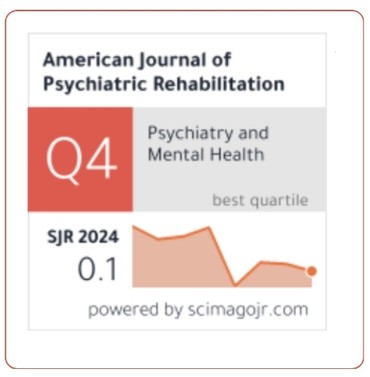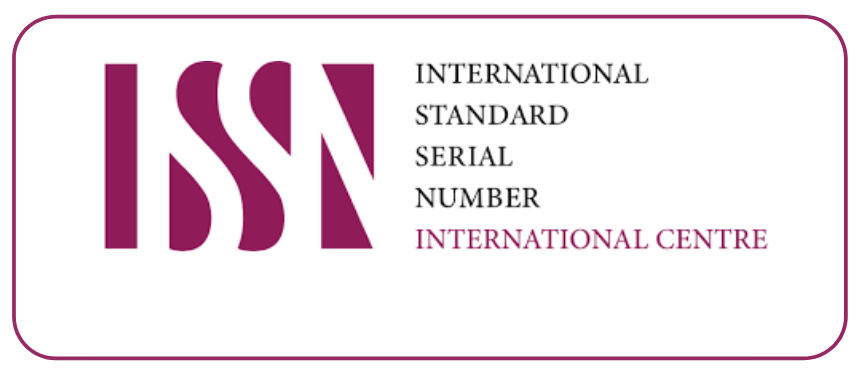Ergonomic Employee Satisfaction and Tourist Experiences: A Review of Indirect Impacts on Tourist Satisfaction in the Hotel Industry.
DOI:
https://doi.org/10.69980/ajpr.v28i5.318Keywords:
Ergonomics, Employee Satisfaction, Employee performance Tourism Experience, Tourist Satisfaction.Abstract
The importance of employees and their organizational commitment has become increasingly significant for business success in today's fast-paced environment. This is particularly relevant in the service industry, especially in tourism, which faces challenges such as high employee turnover, customer loyalty, and other factors. Employee satisfaction is crucial in fostering organizational commitment, which ultimately improves the quality of services provided. From a tourist’s viewpoint, it is essential to understand how satisfaction with tourism services, delivered by ergonomically content employees, affects their experience. Ergonomics, a modern approach that incorporates advanced technologies, seeks to enhance employee performance and productivity while ensuring a comfortable work environment. This paper will explore how ergonomically satisfied employees contribute to a better tourism experience. The primary focus is on conducting a literature review of employee satisfaction within the context of ergonomics and its impact on tourism experiences in the hotel industry. This study will offer new insights into the indirect impact of ergonomically satisfied employees on tourist satisfaction in hotels. By understanding tourists' perspectives, this research aims to improve the tourism experience and better address the needs of visitors to destinations in India. Ultimately, this research will fill gaps in existing literature and create new opportunities for tourism studies.
References
1. (n.d.).
2. Ažić, M. L. (2017). The impact of hotel employee satisfaction on hospitability performance. Tourism and Hospitality Management, 23(1), 105-117. doi:https://doi.org/10.20867/thm.23.1.8
3. Ažić, M. L. (2017). The impact of hotel employee satisfaction on hospitability performance. Tourism and Hospitality Management, 23(1), 105-117. doi:https://doi.org/10.20867/thm.23.1.8
4. Benos, L., Tsaopoulos, D., & Bochtis , D. (2020). A Review on Ergonomics in Agriculture. Part I: Manual Operations. Applied Sciences, 1905(10), 1-21. doi:https://doi.org/10.3390/app10061905
5. Carvalho, R., & Soares, , M. (2012). Ergonomic and usability analysis on a sample of automobile dashboards. Work,. Supplement, 41(1), 1507-1514.
6. Chi, C. G., & Dogan Gursoy. (2009). Employee satisfaction, customer satisfaction, and financial performance: An empirical examination. International Journal of Hospitality Management, 28(2), 245-253.
7. D.MacLeod. ( 1995.). The Ergonomics Edge: Improving Safety, Quality, and Productivity,. New York, NY, USA,: Van Nostrand Reinhold.
8. DARDEER, M., TAG-ELDEEN, A., & SALEM, I. (2017). The Influence of Physical Work Environment on Hotel Back‐of‐the‐House Employees’ Satisfaction and Productivity: A Case Study on Hilton Hotels. JOURNAL OF TOURISM RESEARCH, 18, 43-64.
9. Eklund, J. R. (1997). Ergonomics, quality and continuous improvement conceptual and empirical relationships in an industrial context. Ergonomics, 40(10), 982-1001. doi:http://dx.doi.org/10.1080/001401397187559
10. F.O.Ugwu, Onyishi, I., & Rodríguez-Sánchez, A. (2014). Linking organizational trust with employee engagement: The role of psychological empowerment. Personnel Review, 43(3), 377-400.
11. Fitri, H., Nugraha, A., Hakimah, Y., & Manihuruk, C. (2019). Exploring the mediating role of affective and cognitive satisfaction on the effect of service quality on loyalty. Polish Journal of Management Studies, 19(2), 971-985. doi:http://dx.doi.org/10.17512/pjms.2019.19.2.11
12. Getty, R. L. (1999). ERGONOMICS AND THE CUSTOMER SATISFACTION MODEL:ERGONOMICS IN THE LANGUAGE OF BUSINESS. 43rd ANNUAL MEETING (pp. 815-819). Texas: Proceedings. doi:https://doi.org/10.1177/154193129904301401
13. Hartika, A., Fitridiani, M., & Asbari, M. (2023). The Effect of Job Satisfaction and Job Loyalty on Employee Performance:A Narrative Literature Review. JOURNAL OF INFORMATION SYSTEMS AND MANAGEMENT , 2(3), 9-15.
14. Heskett, J., Jones, , T., Loveman, G., Sasser, W., & Schlesinger, L. (1994). Putting the serviceprofit chain to work. Harvard Business Review, 72(2), 164-175.
15. Heskett, J., Loveman, G., Sasser,, W., & Schlesinger. (1994). Putting the serviceprofit chain to work. Harvard Business Review, 2, 164-175.
16. Hsieh, J. Y. (2016). Spurious or true? An exploration of antecedents and simultaneity of job performance and jobsatisfaction across the sectors. Public Personnel Management, 45(1), 90-118.
17. Ikonne, C. N. (2014). Influence of Workstation and Work Posture Ergonomics on Job Satisfaction of Librarians in the Federal and State University Libraries in Southern Nigeria. IOSR Journal Of Humanities And Social Science, 19(9), 78-84.
18. Jan Dul a, *., & Patrick Neumann, W. (2009). Ergonomics contributions to company strategies. Applied Ergonomics, 40, 745-752. doi:doi:10.1016/j.apergo.2008.07.001
19. Jayaweera, T. (2015). Impact of Work Environmental Factors on Job Performance,Mediating Role of Work Motivation: A Study of Hotel Sector in England. International Journal of Business and Management, 10(3), 271-278. doi:http://dx.doi.org/10.5539/ijbm.v10n3p271
20. KILIÇ, G., & Selim SELVİ , M. (2009). The Effects of Occupational Health and Safety Risk Factors on Job Satisfaction in Hotel Enterprises. Ege Academic Review 9, 9, 903-921.
21. Kruel, B. (2021, August). Bio Functional Health Solution. Retrieved from https://biofunctionalhealth.com/blog/how-ergonomics-affects-employee-productivity/: https://biofunctionalhealth.com/blog/how-ergonomics-affects-employee-productivity/
22. Latip, S. N., Abdul Latip, M., Tamrin, M., Mohd Zulfakar , & Mohd Naw. (2022). The Perspective of Work Ergonomics on Employee Task Performance in Hotel and Tourism Industry, Malaysia. Proceedings, 82(7), 1-7. doi:https://doi.org/10.3390/proceedings2022082007
23. Lee, S. Y., & G. L. , B. (2005). Lee, S. Y. and Effects of control over office workspace on perceptions of the work environment and work outcomes. Journal of Environmental Psychology, 25(3), 323-333. doi:http://dx.doi.org/10.1016/j.jenvp.2005.08.001
24. Perić, G., Gašić2, M., Stojiljković, M., & Nešić, I. (2018). THE IMPACT OF EMPLOYEE SATISFACTION ON THE TOURIST SATISFACTION WITH THE SERVICES OF SPA TOURISM. Economics of Agriculture, 65(02), 617-632. doi:doi:10.5937/ekoPolj1802617P
25. Pushpakumari, M. D. (2008). The Impact of Job Satisfaction on Job Performance :An Empirical Analysis. City Forum, 9(1), 89-105.
26. Rahman, M. A., Hossain, Z., & Azam Khan, M. (2022). Ergonomics and Employee Satisfaction with Special Reference to Selected Branches of Rajshahi Krishi Unnayan Bank. Technium Business and Management (TBM), 2(1), 1-12. doi:https://doi.org/10.47577/business.v2i1.6060
27. Rowan, M. P., & Wright, P. (1994). Ergonomics is Good for Business. Work Study, 43(8), 7-12. doi:http://dx.doi.org/10.1108/EUM0000000004015
28. S.Ismaila. (2010). A study on ergonomics awareness in Nigeria. Australian Journal of Basic and Applied Sciences, 4, 731–734.
29. Seifert, A. M., & Messing, K. (2006). Cleaning Up After Globalization: An Ergonomic Analysis of Work Activity of Hotel Cleaners. Antipode:A redical journal of Geography, 38(3), 557-578. doi:https://doi.org/10.1111/j.0066-4812.2006.00595.x
30. Sheila, A. O., & Purity, N.-O. (2020). Effect of Ergonomic Factors on Employees Performance in Nigeria’s Banking Sector. European Journal of Business and Management, 12(23), 86-98.
31. Sim, J., Mak, B., & Jones, D. (2006). A Model of Customer Satisfaction and Retention for Hotels. Journal of Quality Assurance in Hospitality & Tourism, 7(3), 1-23. doi:http://www.tandfonline.com/action/showCitFormats?doi=10.1300/J162v07n03_01
32. Voordt, T. v., & Jensen, P. (2021). The impact of healthy workplaces on employee satisfaction productivity and costs. Journal of Corporate Real Estate, 25(1), 29-49. doi:http://dx.doi.org/10.1108/JCRE-03-2021-0012
Downloads
Published
Issue
Section
License
Copyright (c) 2025 American Journal of Psychiatric Rehabilitation

This work is licensed under a Creative Commons Attribution 4.0 International License.
This is an Open Access article distributed under the terms of the Creative Commons Attribution 4.0 International License permitting all use, distribution, and reproduction in any medium, provided the work is properly cited.









